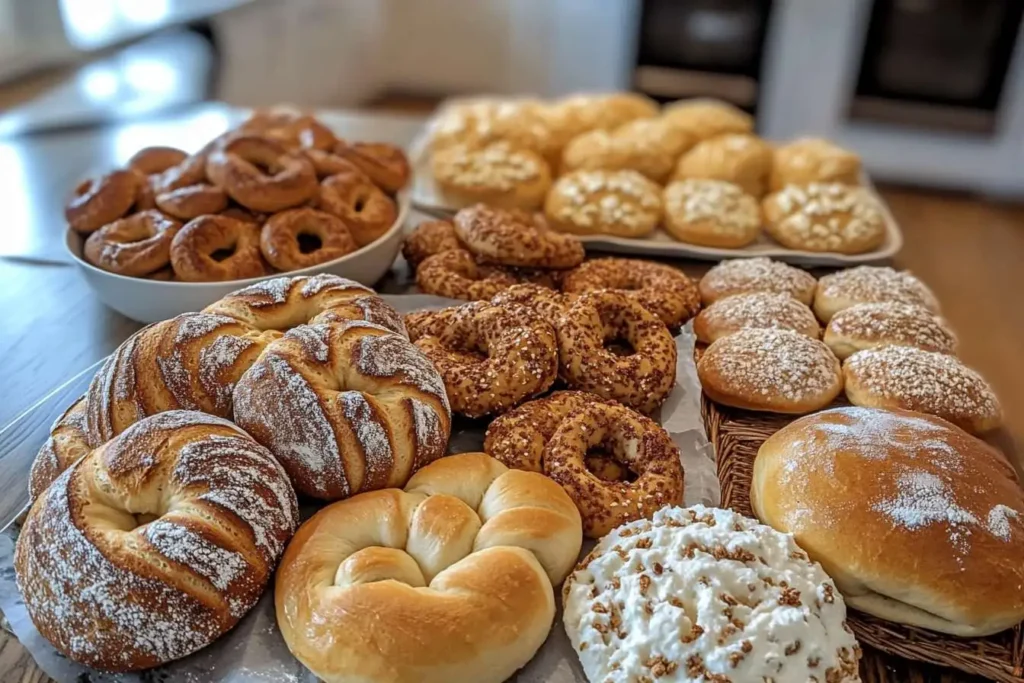Non-Bread Sourdough Recipes aren’t just a fun experiment—they’re a delicious way to make the most of your sourdough starter. When you hear the word “sourdough,” chances are you think of crusty, artisan bread with a perfectly tangy flavor. But did you know that sourdough starter can be used for so much more than just bread? From fluffy pancakes and gooey cinnamon rolls to crispy crackers and homemade pasta, sourdough brings depth, nutrition, and a touch of fermentation magic to a variety of sweet and savory dishes. Whether you’re looking to reduce waste or explore new flavors, these non-bread sourdough recipes will transform the way you use your starter.
Table of Contents
Why Sourdough Isn’t Just for Bread
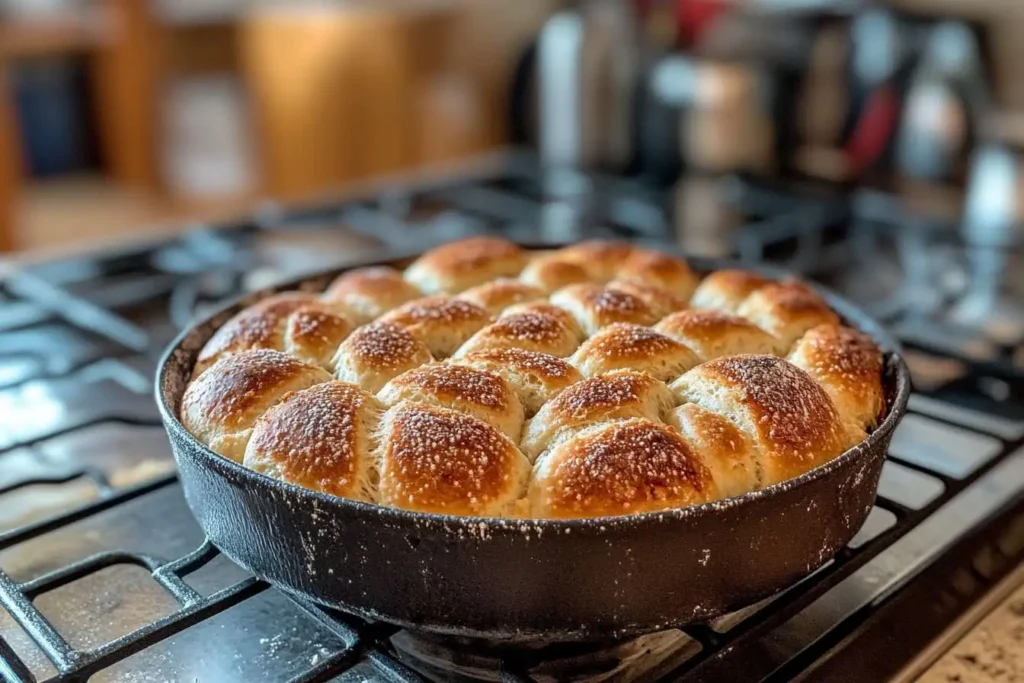
Sourdough fermentation is an ancient technique used for thousands of years to improve texture, enhance digestibility, and add complex flavors to baked goods. But many home bakers don’t realize that this same fermentation magic can be applied to pancakes, muffins, pretzels, crackers, tortillas, and more.
The Benefits of Using Sourdough Starter in Creative Ways
Beyond just making great bread, incorporating sourdough starter into different recipes offers several benefits:
- Enhanced flavor – Sourdough adds a delicious, slightly tangy depth to both sweet and savory dishes.
- Better digestion – The natural fermentation process breaks down gluten and phytic acid, making grains easier on the stomach.
- Healthier ingredients – Sourdough recipes often use fewer artificial ingredients compared to store-bought alternatives.
- Zero-waste baking – Have leftover sourdough discard? Instead of throwing it away, you can turn it into pancakes, crackers, or even brownies.
What Makes Non-Bread Sourdough Recipes Unique?
Unlike traditional sourdough bread, non-bread recipes use sourdough starter or discard in a more flexible way. While bread requires long fermentation and careful hydration balance, sourdough-based pancakes, cakes, and pasta can be made with varying fermentation times, different flour blends, and creative mix-ins. The possibilities are endless.
So, if you’re ready to think beyond the loaf, let’s explore some delicious non-bread sourdough recipes that will transform the way you use your sourdough starter.
Essential Tools & Ingredients for Non-Bread Sourdough Baking
Before diving into recipes, it’s important to have the right tools and ingredients on hand. Non-bread sourdough baking requires some key kitchen essentials to ensure success, whether you’re making pancakes, crackers, or pasta.
Key Equipment
While you don’t need a full bakery setup, having these basic tools will make working with sourdough easier:
- Mixing bowls – For combining ingredients and fermenting batter or dough.
- Whisk and spatula – Essential for mixing wet and dry ingredients smoothly.
- Rolling pin – Useful for sourdough crackers, tortillas, and pasta.
- Baking trays and parchment paper – Helps prevent sticking and ensures even baking.
- Cast-iron skillet or non-stick pan – Ideal for cooking sourdough pancakes, English muffins, and tortillas.
- Bench scraper – Handy for handling sticky dough.
Must-Have Ingredients
Non-bread sourdough recipes require slightly different ingredients than traditional bread baking:
- Flour varieties – While all-purpose flour is versatile, whole wheat, rye, and spelt can add depth of flavor.
- Dairy – Buttermilk, milk, yogurt, or cream can enhance texture and richness.
- Eggs – Provide structure and moisture, especially in cakes and pancakes.
- Natural sweeteners – Honey, maple syrup, or coconut sugar work well in sweet recipes.
- Butter and oils – Needed for softness in cakes, muffins, and biscuits.
- Baking soda and baking powder – Help with rise and texture in quick recipes like pancakes and muffins.
How Sourdough Fermentation Affects Texture
One of the key benefits of using sourdough in non-bread recipes is its ability to enhance texture. Here’s how fermentation influences different baked goods:
- Light and fluffy pancakes & waffles – The natural leavening from sourdough creates extra airy results.
- Tender muffins and cakes – Fermentation helps break down gluten, making baked goods softer.
- Crispy crackers and biscuits – A longer fermentation time develops a deeper, more complex flavor.
- Chewy pasta and tortillas – Sourdough strengthens the dough, giving it better elasticity.
Having the right tools and ingredients will set you up for success. Now, let’s explore some sweet and savory recipes that highlight just how versatile sourdough can be.
Sweet Non-Bread Sourdough Recipes
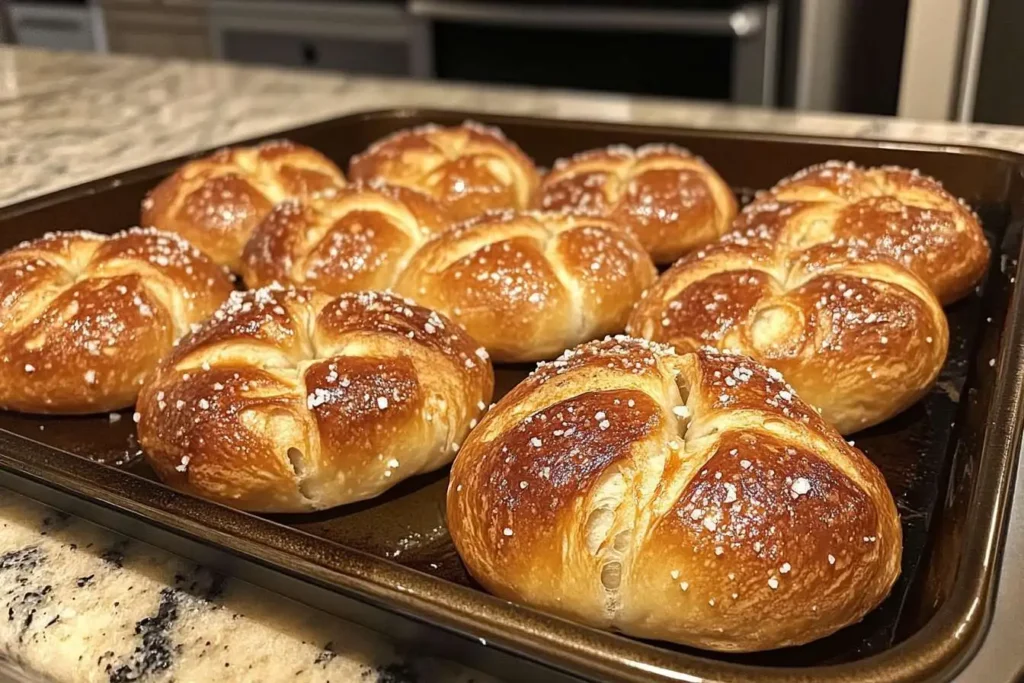
Sourdough isn’t just for savory dishes—it can add depth of flavor and an incredibly soft texture to a variety of sweet treats. From breakfast favorites like pancakes and cinnamon rolls to indulgent cakes and brownies, sourdough enhances the structure and taste of baked goods while making them easier to digest.
1. Sourdough Pancakes & Waffles
Why Sourdough Makes Pancakes and Waffles Extra Fluffy
The fermentation process in sourdough helps create a naturally light and airy batter, resulting in pancakes and waffles with a deliciously tender texture. The acidity also balances out sweetness, adding a slight tang that complements syrups and toppings beautifully.
Step-by-Step Guide
Ingredients:
- 1 cup sourdough starter (active or discard)
- 1 cup all-purpose flour
- ¾ cup milk (or buttermilk for extra tang)
- 1 egg
- 2 tablespoons melted butter
- 1 tablespoon honey or sugar
- 1 teaspoon baking soda
- ½ teaspoon salt
Instructions:
- Mix the starter, flour, and milk – In a large bowl, combine sourdough starter, flour, and milk. Cover and let rest for at least 30 minutes (or overnight for better fermentation).
- Add the remaining ingredients – Stir in the egg, melted butter, honey, baking soda, and salt until smooth.
- Preheat the griddle or waffle iron – Lightly grease and heat to medium.
- Cook until golden brown – Pour batter onto the griddle or into a waffle iron. Flip pancakes when bubbles form on the surface. Cook waffles until crisp.
- Serve warm – Top with butter, maple syrup, fresh fruit, or yogurt.
Overnight vs. Same-Day Methods
- Overnight fermentation: Creates a more complex flavor and lighter texture.
- Same-day preparation: Works well for quick pancakes with mild sourdough tang.
2. Sourdough Cinnamon Rolls
How Natural Fermentation Enhances the Flavor
Sourdough cinnamon rolls develop a deeper, slightly tangy flavor compared to traditional versions. The longer fermentation process also creates a more tender and airy texture.
Tips for Soft, Gooey Cinnamon Rolls
- Use a rich dough with eggs and butter for a soft crumb.
- Allow the dough to ferment overnight for best flavor.
- Roll out the dough evenly and spread the filling generously for gooey layers.
3. Sourdough Banana Muffins & Bread
Using sourdough discard in banana muffins or banana bread helps create a moist texture while reducing waste. The slight acidity enhances the sweetness of ripe bananas.
Best Add-Ins for Extra Flavor
- Chopped nuts (walnuts, pecans)
- Chocolate chips
- Spices (cinnamon, nutmeg)
4. Sourdough Chocolate Cake & Brownies
How Sourdough Deepens the Chocolate Flavor
The natural acidity in sourdough enhances cocoa powder, making chocolate cakes and brownies taste richer. It also helps break down flour proteins for a softer crumb.
Adjusting Tanginess for a Balanced Taste
- For a milder flavor, use discard instead of an active starter.
- Increase sweeteners slightly to balance acidity.
5. Sourdough Doughnuts
Sourdough doughnuts can be baked or fried, depending on your preference. The fermentation process makes them light and airy while adding subtle complexity to the flavor.
Frying vs. Baking: Which Works Best?
- Fried doughnuts – Classic crisp exterior and fluffy interior.
- Baked doughnuts – Lighter texture, but still flavorful and tender.
Achieving a Perfect Texture
- Let the dough ferment overnight for the best rise.
- Use a well-floured surface to prevent sticking when shaping.
👉 Looking for more ways to use your sourdough starter in the morning? Check out Sourdough Breakfast Recipes: Delicious Morning Ideas for fluffy pancakes, waffles, and muffins that make the most of your sourdough discard!
Savory Non-Bread Sourdough Recipes
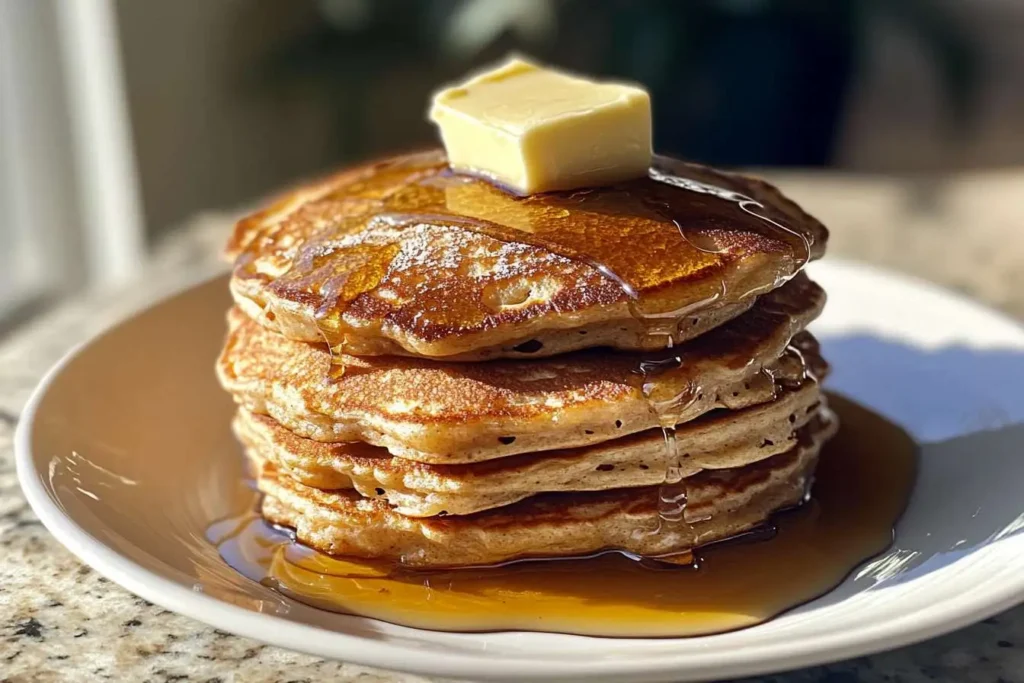
Sourdough’s natural fermentation doesn’t just enhance sweet treats—it also works wonders in savory recipes. From crispy pizza crust to buttery biscuits and chewy pretzels, sourdough adds flavor, texture, and depth to a variety of dishes.
1. Crispy Sourdough Pizza Crust
How Fermentation Improves Texture and Taste
The extended fermentation process in sourdough pizza dough creates a crust that’s crispy on the outside yet chewy on the inside. The natural acidity also enhances the depth of flavor, making it richer than standard yeast-based dough.
Thin-Crust vs. Deep-Dish Techniques
- For a thin-crust pizza: Roll out the dough thinner and bake at a higher temperature.
- For a deep-dish pizza: Use a thicker dough and allow it to rise in a pan before baking.
2. Sourdough Crackers
The Easiest Way to Use Sourdough Discard
Crackers are one of the simplest ways to use up excess sourdough discard. The result is a crispy, flavorful snack that pairs well with cheese, dips, or spreads.
Basic Recipe:
- 1 cup sourdough discard
- 1 cup all-purpose flour
- 2 tablespoons olive oil
- ½ teaspoon salt
- Herbs or spices for extra flavor
Roll the dough thin, cut into squares, and bake until golden and crisp.
3. Flaky Sourdough Biscuits & English Muffins
The Secret to Light, Buttery Layers
Sourdough biscuits and English muffins benefit from fermentation, which creates a flakier texture and a slight tang. The key to great biscuits is cold butter, while English muffins require careful griddle cooking to develop their signature texture.
Breakfast Ideas Using These Favorites:
- Biscuits: Serve with butter, jam, or use them for breakfast sandwiches.
- English muffins: Perfect for eggs Benedict or toasted with honey.
4. Soft & Chewy Sourdough Pretzels
Achieving the Perfect Golden-Brown Crust
The key to great pretzels is boiling them in a baking soda bath before baking. This step creates their signature chewy texture and deep brown color.
Sweet vs. Savory Toppings:
- Savory: Sprinkle with coarse salt, garlic, or cheese.
- Sweet: Coat with cinnamon sugar after baking.
5. Sourdough Pasta & Tortillas
How to Make Fresh Pasta or Tortillas with Sourdough Starter
Homemade pasta and tortillas benefit from sourdough fermentation, making them easier to digest and giving them a better texture.
Adjusting Hydration for the Perfect Dough
- For pasta: Keep the dough firm and elastic. Let it rest before rolling.
- For tortillas: A softer, slightly sticky dough works best for pliability.
How to Adapt Any Recipe Using Sourdough Starter
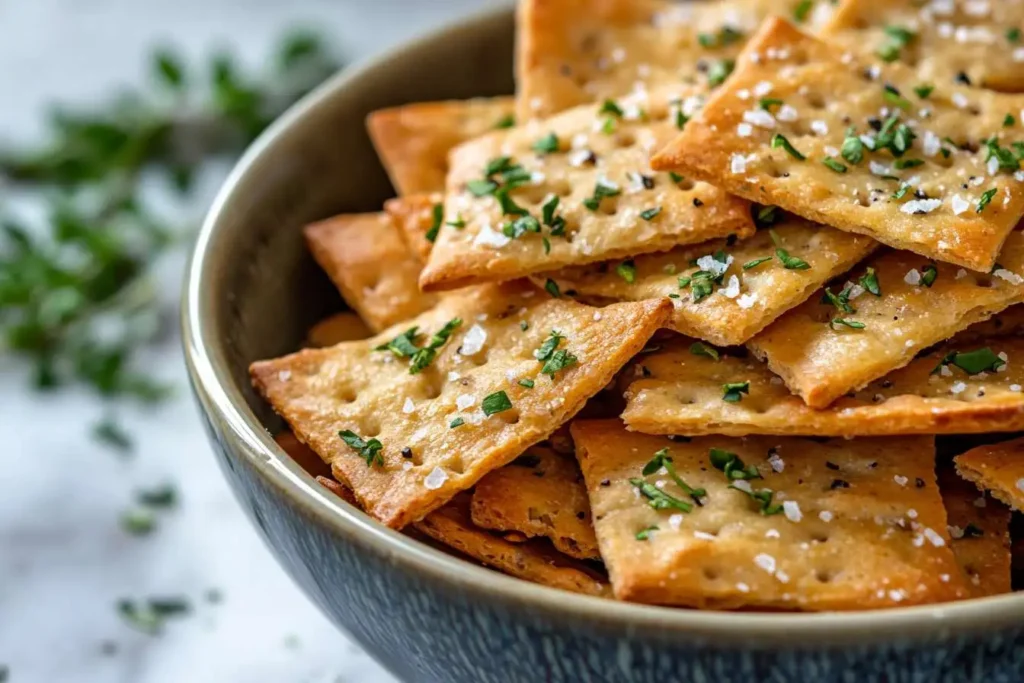
Sourdough isn’t just for recipes specifically designed for it—you can adapt almost any baking recipe to include sourdough starter. Whether you want to replace commercial yeast or simply add sourdough for extra flavor and texture, understanding how to adjust hydration and fermentation times is key.
1. How to Replace Commercial Yeast with Sourdough Starter
To substitute sourdough starter for yeast in a recipe, follow this basic conversion:
- 100g sourdough starter = 5g dry yeast (or 15g fresh yeast)
- Adjust liquid and flour: Since starter is 50% water and 50% flour, reduce both accordingly.
For example, if a recipe calls for 1 cup of water and 3 cups of flour, and you’re adding ½ cup of sourdough starter, reduce the flour by ¼ cup and the water by ¼ cup to maintain the correct consistency.
2. Adjusting Fermentation Time
Unlike instant yeast, sourdough fermentation takes longer. Expect to increase proofing time based on temperature and starter strength:
- Room temperature fermentation: 4 to 12 hours
- Refrigerated fermentation: 12 to 48 hours (great for deeper flavor)
For quick recipes like pancakes or biscuits, an overnight fermentation of the batter or dough improves both texture and taste.
3. Adjusting Hydration for Different Recipes
Sourdough starter contains water, so adjusting hydration levels is crucial when modifying a recipe. Some general tips:
- For cakes and muffins: Use sourdough discard, which has a thicker consistency and less fermentation activity.
- For bread-like dough (pizza, biscuits, pretzels): Maintain a balance between flour and liquid to avoid overly sticky or dry dough.
- For pasta and tortillas: Use a drier dough for pasta and a softer dough for tortillas to achieve the right texture.
4. Common Pitfalls When Experimenting with Sourdough
When adapting a recipe to sourdough, avoid these common mistakes:
- Too much sourness: Reduce fermentation time or balance with extra sweeteners.
- Dough too dry or wet: Adjust flour and liquid ratios based on the starter’s hydration.
- Flat baked goods: Ensure the starter is active, or add a small amount of baking soda for extra lift.
By understanding these principles, you can confidently transform almost any recipe into a sourdough-friendly version.
📌 Want to explore more easy ways to bake with sourdough? Take a look at Sourdough Quick Bread Recipes: A Delicious and Easy Guide for simple, no-fuss sourdough bread recipes that don’t require long fermentation times.
How to Store & Use Sourdough Discard Efficiently

Sourdough discard is a natural byproduct of maintaining a starter, but instead of throwing it away, you can store and use it in creative ways. Proper storage ensures that discard stays fresh and ready for your next batch of pancakes, crackers, or muffins.
1. Best Ways to Store Sourdough Discard
Short-Term Storage (Fridge Method)
- Store discard in a sealed container in the refrigerator.
- Use within 1 to 2 weeks for best freshness.
- Stir before use, as separation may occur.
Long-Term Storage (Freezing Method)
- Freeze discard in pre-measured portions (such as ½ cup) for easy use in recipes.
- Thaw in the fridge or at room temperature before baking.
- Best for recipes that don’t require an active starter (e.g., pancakes, waffles, crackers).
Dehydrating for Shelf-Stable Storage
- Spread discard thinly on parchment paper and let it dry completely.
- Break into flakes and store in an airtight jar.
- To reactivate, mix flakes with warm water and flour.
2. Quick Ideas to Use Up Sourdough Discard
If you have extra discard, try these simple ways to use it without waste:
- Pancakes & waffles – Mix into batter for extra fluffiness.
- Crackers – Roll thin and bake for a crispy snack.
- Flatbreads & tortillas – Adds elasticity and flavor.
- Biscuits & scones – Helps create a tender crumb.
- Batter for frying – Adds depth to fried foods like onion rings or tempura.
By storing discard properly and incorporating it into everyday recipes, you can enjoy sourdough’s benefits while minimizing waste.
Printable Recipe: Sourdough Pancakes
Print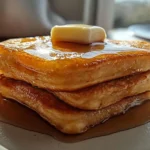
Fluffy Sourdough Pancakes Recipe
- Total Time: 20 minutes
- Yield: 8 pancakes
Description
These light and airy sourdough pancakes are the perfect way to use up sourdough discard. The fermentation process gives them a slightly tangy flavor while making them extra fluffy.
Ingredients
1 cup sourdough starter (discard or active)
1 cup all-purpose flour
¾ cup milk (or buttermilk for extra tang)
1 large egg
2 tablespoons melted butter
1 tablespoon honey or sugar
1 teaspoon baking soda
½ teaspoon salt
½ teaspoon vanilla extract (optional)
Instructions
Mix the base ingredients – In a large bowl, combine sourdough starter, flour, and milk. Stir until smooth. Cover and let rest for at least 30 minutes (or overnight for better fermentation).
Add the remaining ingredients – Stir in the egg, melted butter, honey, baking soda, salt, and vanilla extract. Mix until just combined.
Preheat the griddle or pan – Heat a lightly greased griddle or non-stick pan over medium heat.
Cook the pancakes – Pour about ¼ cup of batter onto the griddle for each pancake. Cook until bubbles form on the surface and edges look set, about 2-3 minutes. Flip and cook for another 1-2 minutes until golden brown.
Serve warm – Enjoy with butter, maple syrup, fresh fruit, or yogurt.
Notes
For extra fluffiness, let the batter rest overnight in the fridge.
Adjust thickness by adding more milk for thinner pancakes or more flour for thicker ones.
Make it dairy-free by substituting plant-based milk and coconut oil instead of butter.
- Prep Time: 10 minutes
- Cook Time: 10 minutes
- Category: Breakfast
- Method: Pan-frying
- Cuisine: American
Nutrition
- Serving Size: 1 pancake
- Calories: 150 kcal
- Sugar: 4g
- Sodium: 220mg
- Fat: 6g
- Saturated Fat: 3g
- Unsaturated Fat: 2.5g
- Trans Fat: 0g
- Carbohydrates: 20g
- Fiber: 1g
- Protein: 4g
- Cholesterol: 40mg
FAQs About Non-Bread Sourdough Recipes
What can I make with sourdough discard besides bread?
Sourdough discard is incredibly versatile. You can use it to make pancakes, waffles, muffins, crackers, pizza crust, tortillas, biscuits, and even desserts like brownies and chocolate cake.
Do I need to let sourdough pancake batter ferment overnight?
Not necessarily. While overnight fermentation enhances flavor and texture, you can make sourdough pancakes the same day by allowing the batter to rest for at least 30 minutes.
Why does my sourdough cake taste too sour?
The tanginess comes from fermentation. To reduce sourness:
Use sourdough discard instead of an active, long-fermented starter.
Increase sweeteners like honey or sugar.
Reduce the fermentation time.
Can I freeze sourdough-based batters?
Most sourdough batters, like pancake or waffle batter, are best made fresh. However, you can:
Freeze cooked pancakes, waffles, or muffins.
Freeze cracker or biscuit dough and thaw before baking.
How do I adjust fermentation for sweet recipes?
To keep sweet baked goods from becoming too tangy:
Use discard instead of active starter.
Reduce fermentation time (1-2 hours instead of overnight).
Balance with extra sweeteners or spices.
Get Creative with Non-Bread Sourdough Recipes!
Sourdough is so much more than just bread. Whether you’re making fluffy pancakes, tender biscuits, crispy crackers, or chewy pretzels, sourdough starter brings unique flavor, texture, and health benefits to a variety of recipes.
By exploring different sweet and savory options, you can turn sourdough discard into delicious meals while reducing waste. Plus, with the ability to adapt almost any recipe using sourdough, the possibilities are endless.
Now it’s your turn! Try out these recipes and experiment with new flavors and techniques. Have a favorite non-bread sourdough recipe? Share your results in the comments—we’d love to hear how you’re using your sourdough starter in creative ways!

